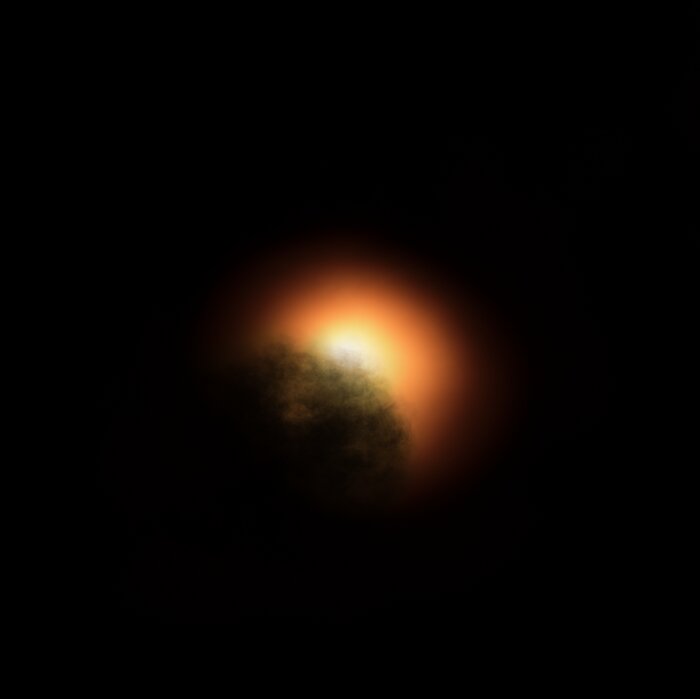
It is somewhat lucky that we have all the right data to understand what happened to Betelgeuse last winter. This star was part of an ongoing campaign by the Hubble Space Telescope that was systematically observing the star in sufficient detail to see changes in brightness on different parts of its surface.
In January 2019, a year before its faintest brightness, Hubble began observing Betelgeuse in the ultraviolet. From September through November 2019, Hubble observed hot material rising through Betelgeuse’s atmosphere. According to Andrea Dupree: With Hubble, we [saw] the material as it left the star’s visible surface and moved out through the atmosphere, before the dust formed that caused the star to appear to dim. We could see the effect of a dense, hot region in the southeast part of the star moving outward. This material was two to four times more luminous than the star’s normal brightness. And then, about a month later, the southern hemisphere of Betelgeuse dimmed conspicuously as the star grew fainter. We think it is possible that a dark cloud resulted from the outflow that Hubble detected. Only Hubble gives us this evidence of what led up to the dimming.
This is consistent with the research Emily Levesque discussed during an interview with us back in April. Essentially, this material, as it cooled, became large dust grains, and those dust grains scattered light of all colors, effectively making the star look dimmer.
The Hubble data adds additional details, which are now published in The Astrophysical Journal, with Dupree as the first author. These results are accompanied by data from the STELLA telescope in Tenerife, which measured the velocity of Betelgeuse’s outer layers during the dimming and mapped the rising of a convective cell coincident with the pulsation curve swelling the star.
It is rare to see so much attention thrown at a single star, but this is a star that might someday go supernova while civilization still exists on Earth. Maybe. Let’s see how 2020 goes. If we can make it to January, maybe we can make it another 100,000 years.
Anyway, lots of scientists want to understand Betelgeuse as well as we can, and the current Hubble observing campaign is slated to continue through 2021. I, for one, hope the data they obtain allows us to understand the renewed dimming and that maybe we will get something particularly exciting to observe this coming season.
For now, we understand last year’s fading, and we have a new fading to confuse us.
More Information
Leibniz Institute for Astrophysics Potsdam (AIP) press release
Center for Astrophysics | Harvard & Smithsonian press release
ESA Hubble Space Telescope press release
“Spatially Resolved Ultraviolet Spectroscopy of the Great Dimming of Betelgeuse,” Andrea K. Dupree et al., 2020 Aug. 13, Astrophysical Journal (Preprint on arxiv.org)




 Join the Crew!
Join the Crew!
 Escape Velocity Space News
Escape Velocity Space News
0 Comments